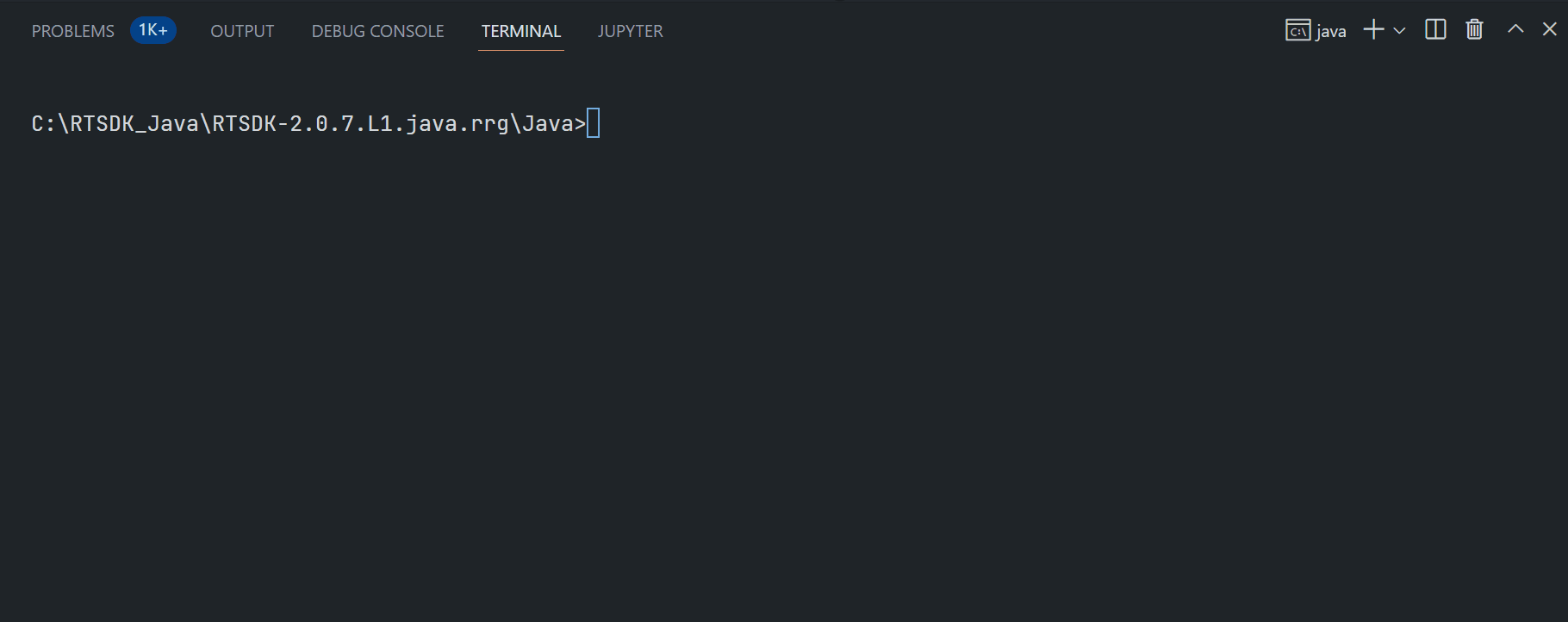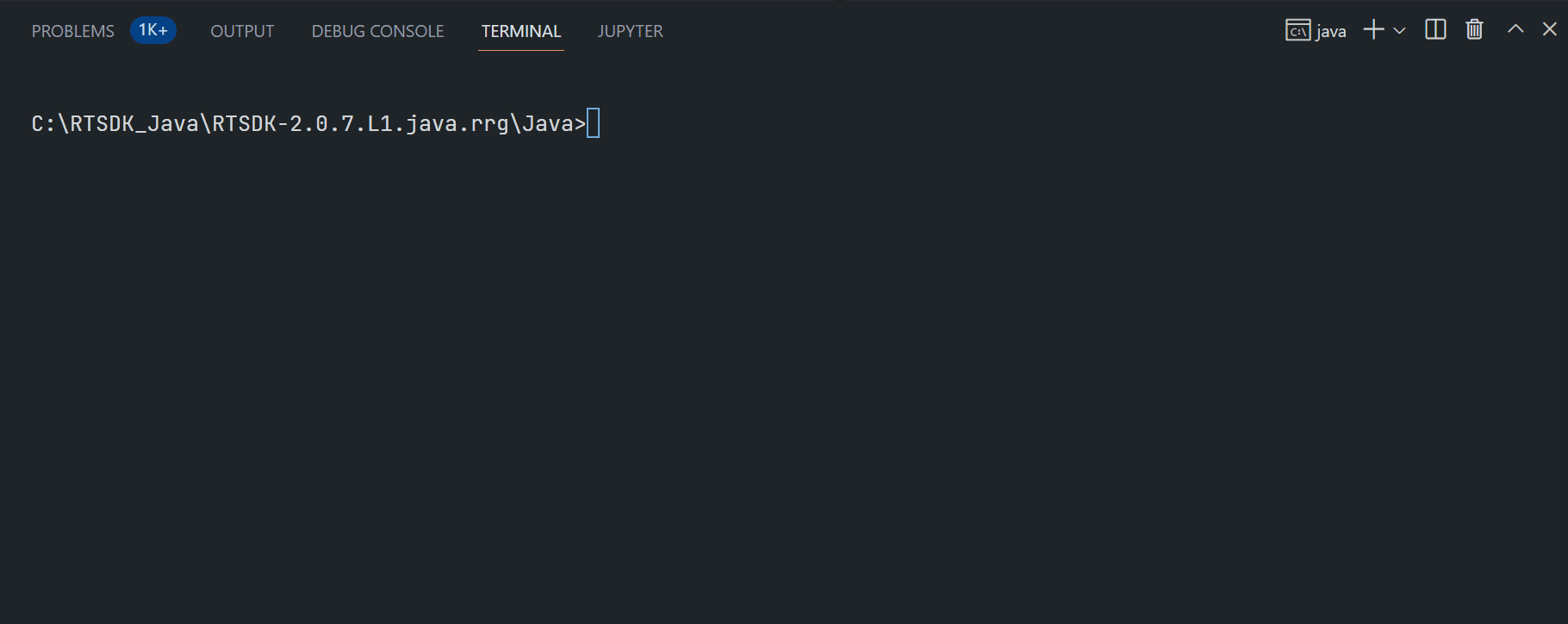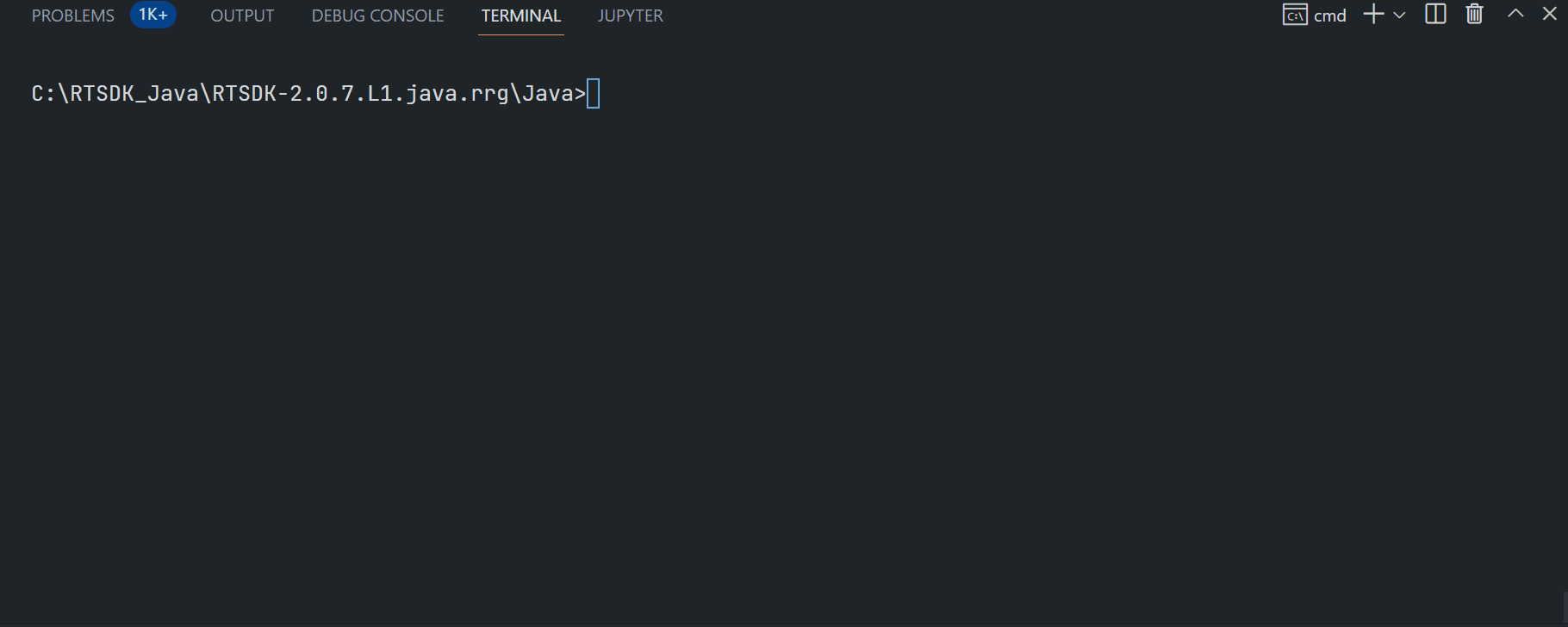
Introduction
Last Updated: June 2025
The Delivery Platform APIs (aka Data Platform, RDP) gives you seamless and holistic access to all of the LSEG content (whether real-time or non-real-time, analytics or alternative datasets), commingled with your content, enriching, integrating, and distributing the data through a single interface, delivered wherever you need it. As part of the Data Platform, the Real-Time - Optimized (RTO) gives you access to best-in-class Real-Time market data delivered in the cloud. The Real-Time - Optimized is a new delivery mechanism for RDP, using the AWS (Amazon Web Services) cloud.
The RTO utilizes the RDP authentication service to obtain Access Token information. The RDP's Version 2 Authentication is a newly introduced authentication service for RTO. It is based on the industry-standard OAuth 2.0 - Client Credentials model and Client Credentials with Private JWT Key (future release) models with a lot of updates, changes, and benefits over Version 1 Authentication for the RTO users This document provides guidelines to migrate the EMA C++ consumer applications to use RDP Version 2 Authentication.
For more detail about the Version 2 Authentication overview and concept, please check this Getting Started with Version 2 Authentication document.
This article is based on RTSDK Java version 2.0.7.L1 (EMA/ETA API version 3.6.7).
RDP Authentication Service version 2 Summaries
Let’s start with a summary of the RDP's Version 2 Authentication Service (simply known as V2 auth, oAuthClientCredentials or V2 Client Credentials) service. It is based on the OAuth 2.0 - Client Credentials Grant and Client Credentials with Private JWT Key (future release) models. The Version 2 Authentication - Client Credentials simplifies the usage of access tokens. The V2 auth will only generate an access token, not both access and refresh tokens.
Once connected to the Real-Time Optimized with an access token, there is no need to renew the access Token. The login session will remain valid until the application disconnects or is disconnected from RTO. The application/API will only re-request an Access Token in the following scenarios:
- When the consumer disconnects and goes into a reconnection state.
- If the Channel stays in reconnection long enough to get close to the expiry time of the Access Token.
API Endpoint
API URL endpoint: http://api.refinitiv.com/auth/oauth2/v2/token (please be noticed the v2 API version)
Request Parameters
There are 2 types of Version 2 Authentication, the Client Credentials Grant and Private JWT.
Client Credentials Grant
The Version 2 Authentication - Client Credentials Grant model does not use the Password Grant/Refresh Grant model, all connections (initial connection and re-new) use a grant_type of client_credentials to get access token information.
The client must have the Service Credentials information for the Version 2 Authentication - Client Credentials Grant model which is the information in the HTTP request parameters:
- grant_type: The grant_type parameter must be set to client_credentials.
- client_id: The client_id is a Service ID (public identifier for apps).
- client_secret: The client_secret is a secret known only to the application and the authorization server (Password).
- scope (optional): Limits the scope of the generated token so that the Access token is valid only for a specific data set
Note: The V2 client_id is not the same value as the V1 client_id which is an app key of the V1 - Password Grant Model.
Client Credentials with Private JWT Key
The Private JWT uses a JSON object as a signed token (either a private secret or a public/private key). In this model instead of the client application using a client_id + client_secret in the Client Credentials Model grant model, the client application (and their Security team) create a JWT, sends the public key to us, and uses the JWT to sign the assertion for authentication to RDP.
This Private JWT Key Model will be released in a future release. This article is focusing on the Client Credentials Grant model for now.
That covers the overview of the RDP Authentication Service version 2. This article is now focusing on the Client Credentials Grant model only.
Prerequisite
The Version 2 Authentication requires the following dependencies.
- Service credential (client_id and client_secret).
- RTSDK Developers: RTSDK version 2.0.5 (EMA/ETA API version 3.6.5) and above.
- Internet connection.
Please contact your LSEG representative to help you to access the RTO account and services.
RDP Version 2 Authentication EMA Java Code Migration
Moving on to the next topic, how to migrate the EMA Java applications code to use the Version 2 Authentication. The Real-Time SDK (RTSDK) C/C++, Java, and C# editions already support the Version 2 Authentication since version 2.0.5 (EMA/ETA API version 3.6.5).
The EMA Java API automatically operates the RTO HTTP and streaming connections workflow for the application. However, developers need to pass the V2 client_id and client_secret credentials to the API and use newly introduced Version 2 Authentication methods/interfaces for connecting to the RTO. The following parts in the code must be modified to migrate the EMA Java applications to use RDP Version 2 Authentication.
1. Setting RDP Version 2 Authentication credentials to the OmmConsumer Class
I will begin with the most important code migration, setting credentials to the OmmConsumer class. The V2 auth Client Credentials requires a client ID and client secret credential instead of a username, password, and client ID. The client ID and client secret are set to the OmmConsumer instance via the OmmConsumerConfig class.
The code must be modified to use the client ID and client secret, as shown below.
OmmConsumer consumer = null;
AppClient appClient = new AppClient();
OmmConsumerConfig config = EmaFactory.createOmmConsumerConfig();
consumer = EmaFactory.createOmmConsumer(config.consumerName("Consumer_1").clientId(clientId).clientSecret(clientSecret));
consumer.registerClient(EmaFactory.createReqMsg().serviceName("ELEKTRON_DD").name(itemName), appClient);
Note: The userName, password, and V1 clientID (App Key) properties are not used in RDP Version 2 Authentication.
2. Setting RDP Version 2 Authentication credentials in the service discovery
If the application uses the service discovery, this modification is required.
The service discovery is used to query service endpoints from the Real-Time Optimized service. It also requires RDP credentials to connect to the service discovery endpoint. To migrate to RDP Version 2 Authentication, the client ID and client secret must be set in the ServiceEndpointDiscovery instance via the ServiceEndpointDiscoveryOption class.
The code must be modified to use the client ID and client secret, as shown below.
AppClient appClient = new AppClient();
ServiceEndpointDiscovery serviceDiscovery = null;
serviceDiscovery = EmaFactory.createServiceEndpointDiscovery();
serviceDiscovery.registerClient(EmaFactory.createServiceEndpointDiscoveryOption().clientId(clientId).clientSecret(clientSecret)
.transport(connectWebSocket ? ServiceEndpointDiscoveryOption.TransportProtocol.WEB_SOCKET : ServiceEndpointDiscoveryOption.TransportProtocol.TCP), appClient);
Note: The userName, password, and V1 clientID (App Key) properties are not used in RDP Version 2 Authentication.
3. Setting a client secret in the ReactorOAuthCredentialRenewal
If the application uses the OAuth credential event callback function, this modification is required.
By default, the Enterprise Message API will store all credential information. To use secure credential storage, a callback function can be specified by the user. If an OmmOAuth2ConsumerClient instance is specified when creating the OmmConsumer object, the EMA API does not store the password or clientSecret. In this case, the application must supply the password or clientSecret whenever the OAuth credential event OmmOAuth2ConsumerClient.onCredentialRenewal callback method is invoked. This call back must call set the credentials to the OAuth2CredentialRenewal instance and set it toOmmConsumer.renewOAuthCredentials to provide the updated credentials.
The code must be modified to use the client ID and client secret, as shown below.
/* This is for example purposes, For best security, please use a proper credential store. */
class CredentialStore {
public String clientSecret;
public String clientId;
public OmmConsumer consumer;
}
/* Implementation of OmmOAuth2ConsumerClient. This is a very basic callback that uses the closure to obtain the OmmConsumer and call submitOAuthCredentialRenewal.
* This is intended to show functionality, so this example does not implement or use secure credential storage.
*/
class OAuthCallback implements OmmOAuth2ConsumerClient {
public void onOAuth2CredentialRenewal(OmmConsumerEvent event) {
CredentialStore credentials = (CredentialStore)event.closure();
OAuth2CredentialRenewal renewal = EmaFactory.createOAuth2CredentialRenewal();
renewal.clientId(credentials.clientId);
renewal.clientSecret(credentials.clientSecret);
System.out.println("Submitting credentials due to token renewal");
credentials.consumer.renewOAuthCredentials(renewal);
}
}
// Consumer class
public class Consumer {
static OAuthCallback oAuthCallback = new OAuthCallback();
static CredentialStore credentials = new CredentialStore();
OmmConsumer consumer = null;
OmmConsumerConfig config = EmaFactory.createOmmConsumerConfig();
credentials.clientId = "<client ID>";
credentials.clientSecret = "<client secret>";
consumer = EmaFactory.createOmmConsumer(config.consumerName("Consumer_1")
.clientSecret(credentials.clientSecret).clientId(credentials.clientId), oAuthCallback, (Object)credentials);
credentials.consumer = consumer;
consumer.registerClient(EmaFactory.createReqMsg().serviceName("ELEKTRON_DD").name(itemName), appClient);
}
4. Changing the RDP Version 2 Authentication endpoint
If the application changes the endpoint of the RDP authentication service, this modification is required.
By default, the endpoint of the RDP Version 2 Authentication is https://api.refinitiv.com/auth/oauth2/v2/token. However, this can be overridden by specifying another endpoint in the tokenServiceUrlV2 method of the OmmConsumerConfig class.
The RDP Version 2 Authentication endpoint can be changed via the following code.
OmmConsumer consumer = null;
AppClient appClient = new AppClient();
OmmConsumerConfig config = EmaFactory.createOmmConsumerConfig();
consumer = EmaFactory.createOmmConsumer(config.consumerName("Consumer_1")
.clientId(clientId).clientSecret(clientSecret)
.tokenServiceUrlV2("<RDP Version 2 Authentication Endpoint>"));
consumer.registerClient(EmaFactory.createReqMsg().serviceName("ELEKTRON_DD").name(itemName), appClient);
For more information, please refer to the ex113_MP_SessionMgmt, ex450_MP_QueryServiceDiscovery, and ex451_MP_OAuth2Callback_V2 EMA examples in the Real-Time SDK Java package.
That covers the Version 2 Authentication code migration for the EMA Java applications.
Running EMA Java API Version 2 Authentication Examples
My next point is how to run the Version 2 Authentication examples. Developers can run the examples in a command line with the Gradle build tool and supported Java SDK. Please check the EMA Java readme file and the API Compatibility Matrix document.
Running ex451_MP_OAuth2Callback_V2 example:
$>gradlew.bat runconsumer451 --args="-clientId <ClientID> -clientSecret <ClientSecret> -p <14002/443> -h <RTO ADS Host> -itemName EUR="
Examples of RTO RSSL Hosts are as follows (based on each user's permission):
- ap-northeast-1-aws-3-sm.optimized-pricing-api.refinitiv.net
- us-east-1-aws-3-sm.optimized-pricing-api.refinitiv.net
Running ex450_MP_QueryServiceDiscovery example:
$>gradlew.bat runconsumer450 --args="-clientId <ClientID> -clientSecret <ClientSecret> -itemName EUR="
Running ex113_MP_SessionMgmt example:
$>gradlew.bat runconsumer113 --args="-clientId <ClientID> -clientSecret <ClientSecret> -itemName EUR="
Summary
That brings me to the end of this article. The RDP Version 2 Authentication simplifies the usage of access tokens when connecting to the Real-Time Optimized. It uses the industry-standard [OAuth 2.0 - Client Credentials model] with a client ID, and client secret credentials instead of a username, password, and client ID (application key). The major advantage for real-time users is the applications don’t need to renew access tokens at every specific interval. The access token used by the application will remain valid until the application disconnects or is disconnected from Real-Time Optimized.
To migrate applications to use the RDP Version 2 Authentication, the code that relates to RDP Authentication must be modified including setting a client ID and client secret in OmmConsumerConfig, ServiceEndpointDiscovery, and OAuth2CredentialRenewal, and optionally changing the RDP Version 2 Authentication endpoint in OmmConsumerConfig.
If you are using the other APIs in the Real-Time SDK family, please see more detail about using it with the Version 2 Authentication from the following resources:
- EMA C++ API: Real-Time Optimized Version 2 Authentication Migration Guide article
- ETA C: Real-Time Optimized Version 2 Authentication Migration Guide article
- ETA Java: Real-Time Optimized Version 2 Authentication Migration Guide article
If you are the WebSocket API developer, even though you need to manually update the application source code to use new V2 HTTP and WebSocket connections, the V2 workflow is simple to operate when compared to the Authentication V1. Please see more detail about using the WebSocket API with the Version 2 Authentication from the following resource:
That’s all I have to say about the EMA Java and the Version 2 Authentication code migration.
References
For further details, please check out the following resources:
- Changes to Customer Access and Identity : Real-Time - Optimized article
- Getting Started with Version 2 Authentication
- Real-Time SDK Family page.
- Real-Time SDK Java page on the LSEG Developers Community website.
- EMA C++ API: Real-Time Optimized Version 2 Authentication Migration Guide article
- ETA C: Real-Time Optimized Version 2 Authentication Migration Guide article
- ETA Java: Real-Time Optimized Version 2 Authentication Migration Guide article
- Real-Time WebSocket API: Real-Time Optimized Version 2 Authentication Migration Guide article
- OAuth 2.0 - Client Credentials page.
- OAuth 2.0 - Access Token Response page.
- OAuth 2.0 - Password Grant page.
- OAuth 2.0 - Client Credentials Grant page.
For any questions related to this article or the RTSDK page, please use the Developer Community Q&A Forum.
Get In Touch
Related Articles
Related API
Request Free Trial
Call your local sales team
Americas
All countries (toll free): +1 800 427 7570
Brazil: +55 11 47009629
Argentina: +54 11 53546700
Chile: +56 2 24838932
Mexico: +52 55 80005740
Colombia: +57 1 4419404
Europe, Middle East, Africa
Europe: +442045302020
Africa: +27 11 775 3188
Middle East & North Africa: 800035704182
Asia Pacific (Sub-Regional)
Australia & Pacific Islands: +612 8066 2494
China mainland: +86 10 6627 1095
Hong Kong & Macau: +852 3077 5499
India, Bangladesh, Nepal, Maldives & Sri Lanka:
+91 22 6180 7525
Indonesia: +622150960350
Japan: +813 6743 6515
Korea: +822 3478 4303
Malaysia & Brunei: +603 7 724 0502
New Zealand: +64 9913 6203
Philippines: 180 089 094 050 (Globe) or
180 014 410 639 (PLDT)
Singapore and all non-listed ASEAN Countries:
+65 6415 5484
Taiwan: +886 2 7734 4677
Thailand & Laos: +662 844 9576








